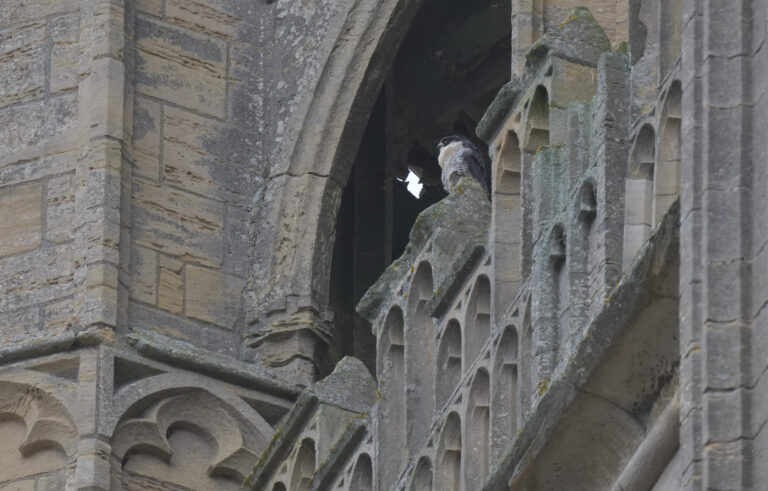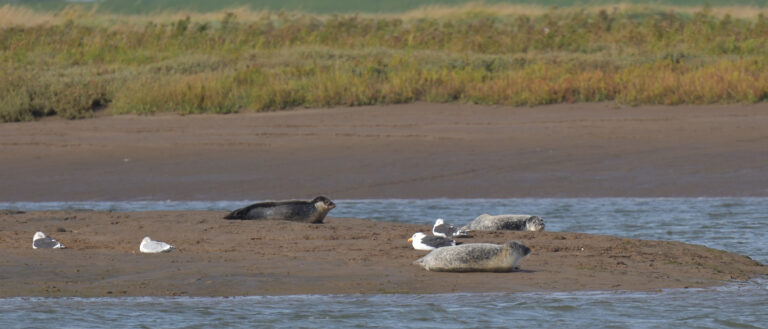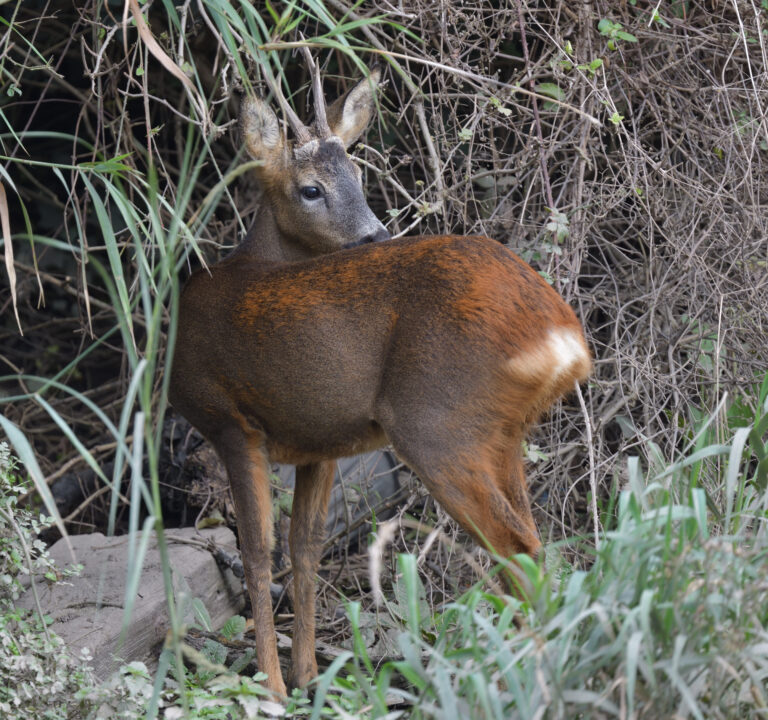
We begin our ‘spin’ on The Wash at the Freiston Shore RSPB reserve, where the lagoon produces a couple of Little Egrets and at least 23 Little Grebes! Moving on along the wetland trail we spot Kestrel and Marsh Harrier, along with Brent Geese and Common Seals along the water’s edge where the Rivers Witham and Welland meet out in The Wash. On the return leg of the circuit an obliging male Stonechat poses on the tops of several bushes alongside the trail ahead of us and then we find another bush alive with Chiffchaffs, Linnets and a lively bunch of Long-tailed Tits.
A Peregrine flying around the top of Boston ‘Stump’, England’s tallest parish church, across the river from our hotel, is the first bird on our list today, spotted from the hotel car park! From here, we visit the nearby Frampton Marsh RSPB reserve, hoping to see some of the rarities reported here yesterday. On arrival, the car park is jam-packed, as is the lagoon outside the visitor centre, where hundreds of tightly grouped Black-tailed Godwits are joined by a few Avocets, Ruff, Knot and four sleeping Whooper Swans, which occasionally wake up and show their custard yellow bills. From here, we head for the 360° Hide hoping to find the Semipalmated and White-rumped Sandpipers blown in from North America by recent Storm Agnes. Finding these ‘needles’ proves to be a real challenge as the marsh around the hide is swarming with Ringed and Golden Plovers, Dunlin, Little Stints and Curlew Sandpipers and the challenge is compounded by their restless state brought on by repeated low flying raids by a marauding Peregrine. Moving on along the breezy dyke which separates the freshwater marsh from the saltmarsh that extends to The Wash mudflats we find more Brent Geese and Ruff, a couple of Skylarks, and then another of the recently reported American vagrants, a beautifully marked Buff-breasted Sandpiper showing really well just a few yards from the landward side of the dyke.
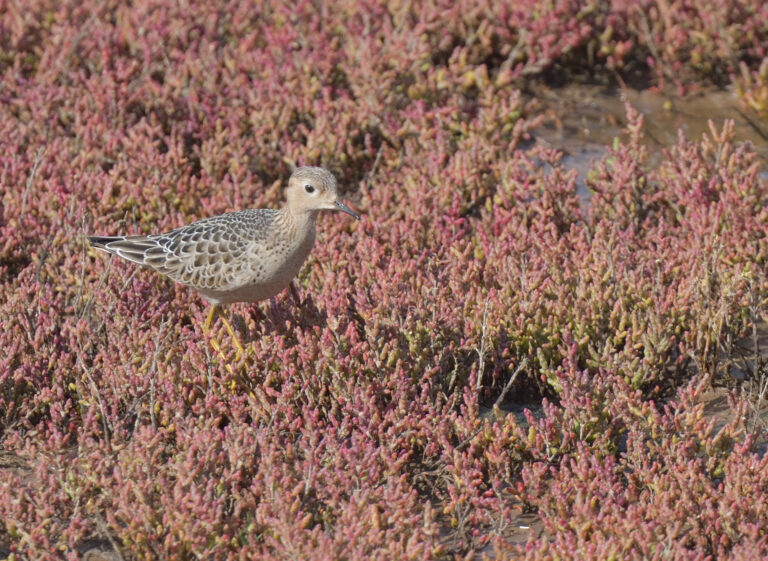
After lunch back at the visitor centre, another walk around the reserve produces new birds like Great White Egret, Green Sandpiper, Snipe, a couple of lingering House Martins and three Swallows and best of all, a transatlantic Lesser Yellowlegs, making two American vagrants in one day!
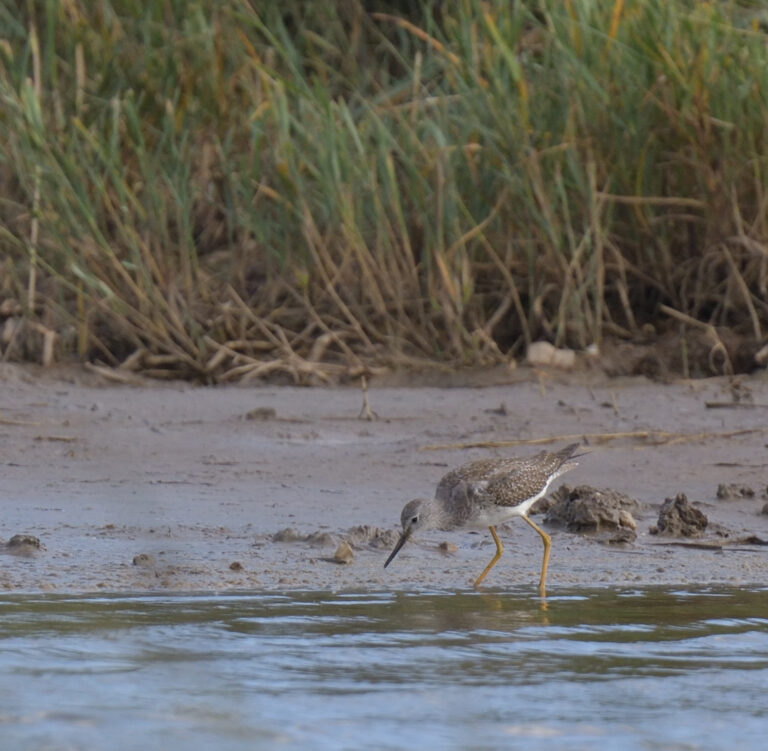
Today we head north to Gibraltar Point, where we begin with several hides overlooking freshwater lagoons. The first lagoon produces a Little Egret and eight Avocets, with two Stock Doves and fourteen Curlews feeding in the adjacent meadow. From Harvey’s Hide we spot Greenshank, Pintail and a single Bar-tailed Godwit sleeping amid dozens of roosting Black-tailed Godwits and then thirty-one Pink-footed Geese drop in from Iceland! The next hide produces another fourteen Avocets, a different angle on the Bar-tail and five snoozing Spotted Redshanks. On the way back to the visitor centre for lunch, from the Mere Hide, we look down a Snipe, close enough to prod with a long stick (if we wanted to!) and showing every intricate detail of its superbly camouflaged plumage.
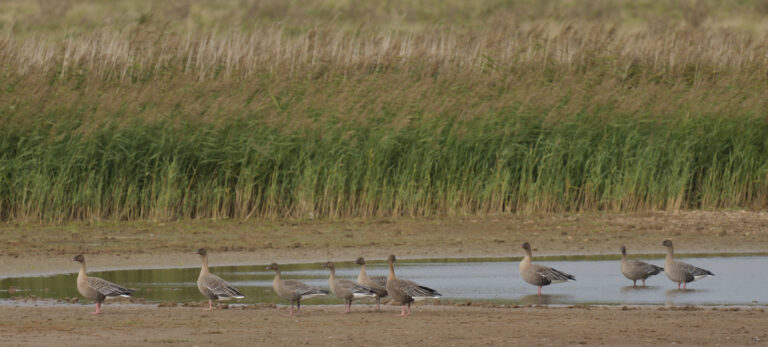
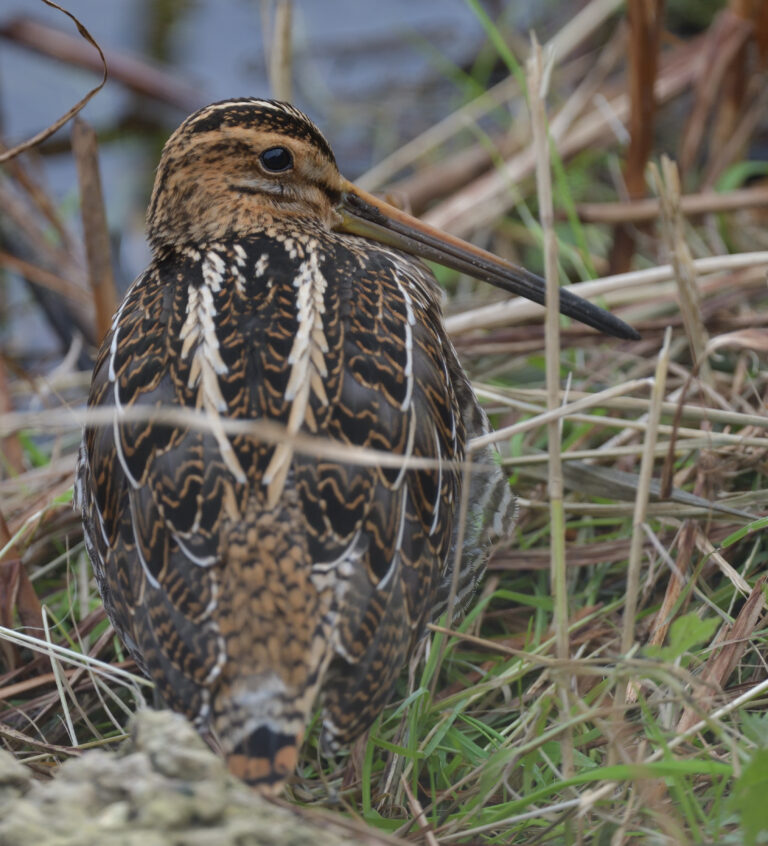
This afternoon we visit the sandy shore which is surprisingly quiet apart from hundreds of Grey Seals hauled out on one of the sand bars.
Today we visit the Snettisham RSPB reserve on the Norfolk side of The Wash where two Red Kites fly right overhead not far from the car park. Our arrival at the shingle shore coincides with a high tide covering much of the vast mud flats and corralling thousands of waders such as Curlew, Bar-tailed Godwit, Redshank, Dunlin, Oystercatcher and Ringed and Grey Plovers into dense flocks near the water’s edge. Meanwhile waves of peeping Golden Plovers in their hundreds pass over from inland to join the congregation, making a spectacular air show, especially when a low flying Peregrine flies into the crowd sending tight knit wheeling flocks skywards, like wisps of smoke billowing in a stiff breeze.
After a picnic lunch in the warm sunshine, with a Hummingbird Hawk Moth hovering around blooms of deep blue Viper’s Bugloss, a couple of confiding Wheatears plus a smart male Pheasant and a handful of Red-legged Partridges are all new for the trip. On the way back along the shingle shore we even find an unusual leucistic Oystercatcher with a dirty white body, an orange bill and pink legs!
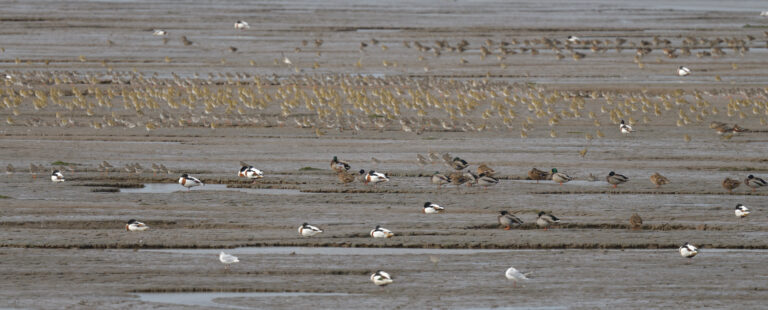

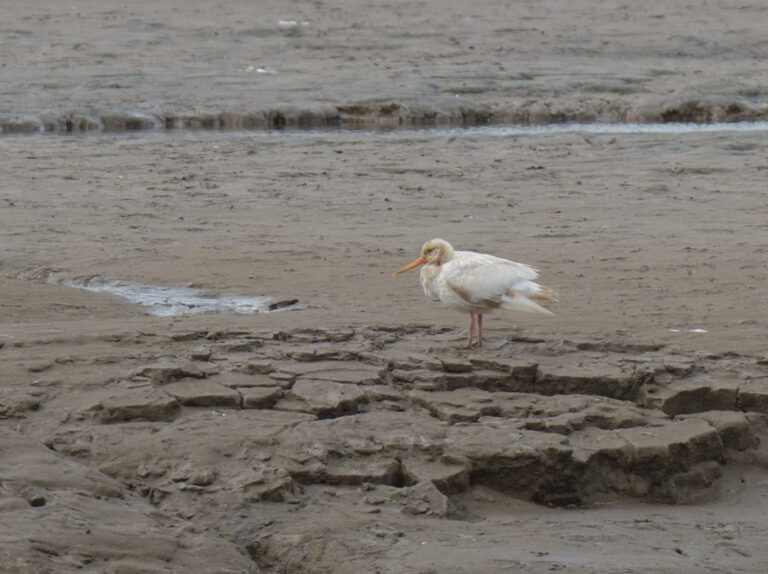
A Roe Deer swimming across the river next to the high church in the middle of Boston is an unexpected sight from the hotel breakfast room this morning! Meanwhile, it’s our last day and time for our 9.30am ‘spin’ on The Wash, aboard the Boston Belle, where the first sighting is a Kingfisher on the marina wall and a Peregrine high up on the crenelations of Boston ‘stump’, before we have even started moving! Drifting slowly down the Witham, we spot House Sparrows in one of the town gardens and enjoy seeing two or three more Kingfishers as well as a Common Sandpiper. Fifteen minutes into the cruise, beyond the Boston flood barrage, we cross the Greenwich Meridian into the eastern hemisphere, where the widening channel is lined by dozens of Redshanks and Little Egrets as well as Herons, Curlews, Black-tailed and Bar-tailed Godwits, Ruff and eventually Oystercatchers, Turnstones and Ringed and Grey Plovers as we approach Witham Mouth. Amongst all the Brent Geese, Shelduck and Godwits along the shoreline we also find a dozen or so Sandwich Terns and as the boat turns right towards the River Welland, we start to see Common Seals with one or two Kestrels and Marsh Harriers hunting over the adjacent saltmarshes. Returning to the mouth of the Witham we add Guillemot and House Martin to the list, followed by Grey Wagtail further upstream, where another bright blue Kingfisher flashes by. By now we had seen fifty different birds and once in the narrows back in the centre of town we even spot the Roe Deer on the riverbank as well as a Brown Rat. Where else could one see the likes of House Sparrow, Guillemot, Roe Deer and Common Seal from the same boat?
